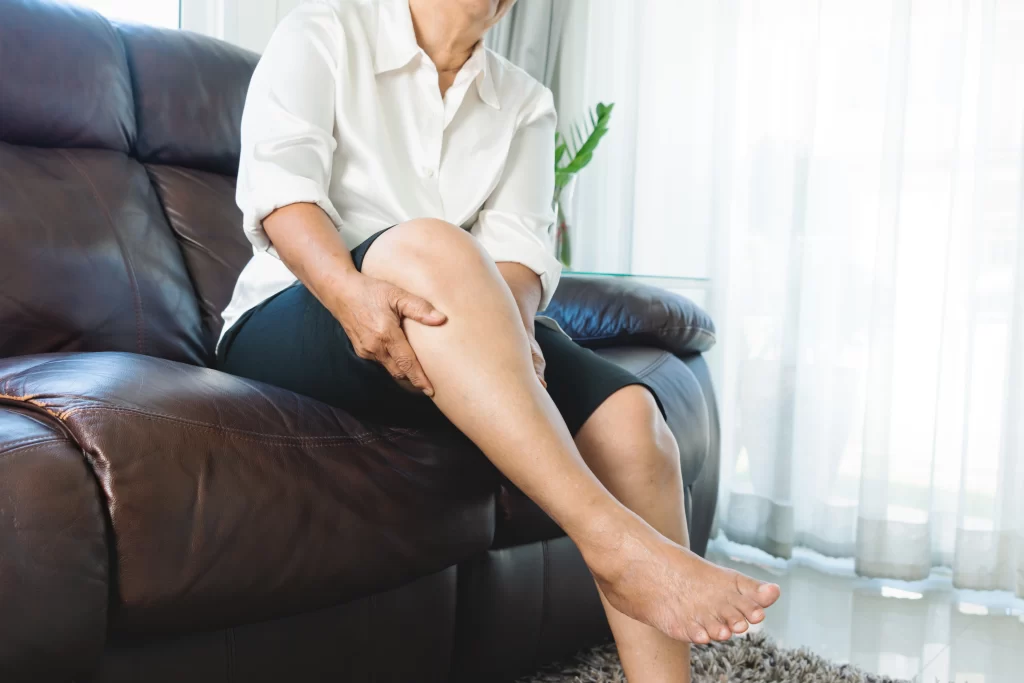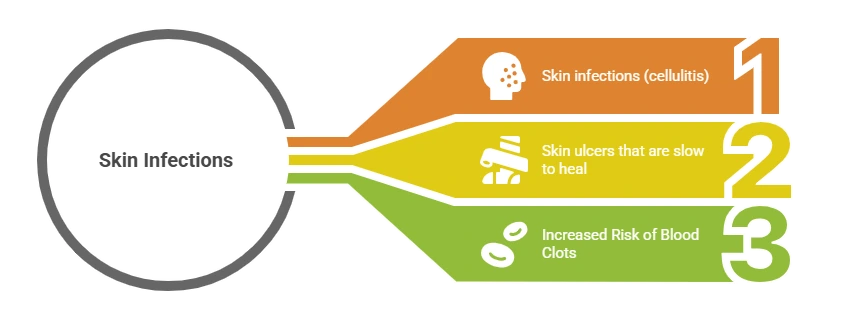Is Leg Swelling a Sign of a Vein Disorder?
Quick Summary
1. Leg swelling and foot swelling are common but can signal a serious vein disorder like venous insufficiency.
2.Common causes include prolonged sitting, pregnancy, medications, injury, or weakened leg veins.
3.Venous insufficiency occurs when leg veins fail to circulate blood properly, leading to fluid buildup in ankles and feet.
4.Ignoring swollen ankles can lead to skin changes, infections, or ulcers, early treatment helps prevent complications.
5. In California, professional vein treatment options like varicose vein procedures can help relieve swelling, contact a specialist for proper care.
Have you recently noticed your legs or ankles swelling by the end of the day? Are you often asking yourself, “Why are my ankles swollen?” If so, you’re not alone. Leg swelling (also called edema) is quite common, especially in adults, and while sometimes it can result from minor lifestyle factors, it can also be an early sign of an underlying vein disorder.
Here we’ll explain why your legs or feet might swell, how to know when it’s a sign of something more serious, and what you can do next, especially if you’re in California, USA, where vein treatments are readily available.

Understanding Leg Swelling
Leg swelling usually occurs when fluid builds up in the tissues of your lower legs, feet, or ankles. You might notice your shoes feeling tighter by evening, or visible puffiness around your ankles. Sometimes, you might even spot foot swelling or changes in skin color.
While it can be temporary and harmless, like after standing or sitting for long hours, persistent or worsening swelling can indicate a problem with circulation, especially in the veins.
Why Are My Ankles Swollen? Common Causes
If you often find yourself wondering, “My ankles are swollen, what could be the reason?” here are some common explanations:
- Prolonged sitting or standing: Reduced muscle movement limits blood return to the heart.
- Pregnancy: Increased blood volume and hormonal changes can cause swelling.
- Medications: Some blood pressure drugs, steroids, or antidepressants may lead to swelling.
- Injury or infection: Trauma to the leg or foot can result in localized swelling.
But one of the most overlooked reasons is a vein disorder, like chronic venous insufficiency (CVI) or varicose veins.
How Vein Disorders Lead to Swollen Legs and Ankles
Veins in your legs have one-way valves that help blood flow back to the heart. When these valves weaken or fail, blood can pool in the lower legs, a condition known as venous insufficiency. This increases pressure in the veins and pushes fluid into surrounding tissues, leading to leg swelling.
Some signs that your leg swelling might be vein-related include:
- Swelling that worsens throughout the day and improves after resting or elevating the legs
- Aching, heaviness, or cramping in your legs
- Visible varicose veins or spider veins
- Skin changes like discoloration or thickening near the ankles
If you notice any of these, it’s a good idea to speak with a specialist. The Top spider veins Clinic Beverly Hills offers detailed evaluations and personalized treatment plans.
If you notice these symptoms, it’s wise to seek professional evaluation. In California, clinics like ours specialize in diagnosing and treating these vein disorders to help relieve swelling and discomfort.
Why You Shouldn’t Ignore Persistent Leg Swelling
Ignoring ongoing foot swelling or swollen ankles can lead to complications. Over time, untreated venous insufficiency can cause:

Early diagnosis and treatment can prevent these issues and improve your comfort and mobility.
What You Can Do About Swollen Legs and Ankles
If you experience swelling, try these self-care tips:
- Elevate your legs above heart level for 15–20 minutes a few times daily.
- Wear compression stockings to help improve circulation.
- Move frequently: Avoid sitting or standing for too long.
- Maintain a healthy weight and stay active.
However, if swelling persists or is accompanied by other symptoms like pain, visible veins, or skin changes, it’s time to see a vein specialist.
At the Center for Vein Wellness, we offer advanced treatments like varicose vein treatment in Beverly Hills, including minimally invasive procedures that improve circulation and reduce swelling.
Conclusion
So, is leg swelling a sign of a vein disorder? Often, yes. While not every case is serious, persistent or worsening swelling, especially with other vein symptoms, may point to venous insufficiency or varicose veins.
If you’re based in California and wondering about the reason for swollen ankles, don’t wait to get checked. Seeking professional help can offer relief and protect your long-term vascular health.Ready to take the next step? Contact us today to schedule a consultation and let our specialists help you find the cause and the right treatment for your leg swelling

